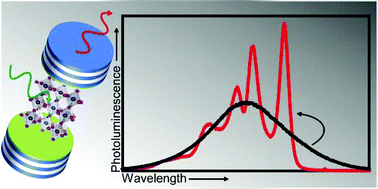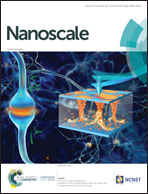All-polymer methylammonium lead iodide perovskite microcavities†
Abstract
Thanks to a high photoluminescence quantum yield, large charge carrier diffusion, and ease of processing from solution, perovskite materials are becoming increasingly interesting for flexible optoelectronic devices. However, their deposition requires wide range solvents that are incompatible with many other flexible and solution-processable materials, including polymers. Here, we show that methylammonium lead iodide (MAPbI3) films can be directly synthesized on all-polymer microcavities via simple addition of a perfluorinated layer which protects the polymer photonic structure from the perovskite processing solvents. The new processing provides microcavities with a quality factor Q = 155, that is in agreement with calculations and the largest value reported so far for fully solution processed perovskite microcavities. Furthermore, the obtained microcavity shows strong spectral and angular redistribution of the the MAPbI3 photoluminescence spectrum, which shows a 3.5 fold enhanced intensity with respect to the detuned reference. The opportunity to control and modify the emission of a MAPbI3 film via a simple spun-cast polymer structure is of great interest in advanced optoelectronic applications requiring high colour purity or emission directionality.

- This article is part of the themed collection: Halide Perovskite Nanocrystals


 Please wait while we load your content...
Please wait while we load your content...